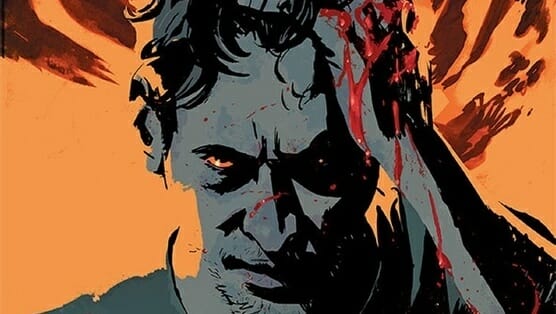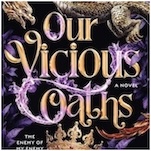Outcast #1 by Robert Kirkman and Paul Azaceta

Writer: Robert Kirkman
Artist: Paul Azaceta
Publisher: Image
Release Date: June 25, 2014
I was 12-years-old when I saw The Exorcist, and it scared the shit out of me. I watched Linda Blair’s blood-curdling growls and vomit ejaculations through interlocked fingers; it would take me almost 12 more years to summon enough courage to give The Exorcist a second play through. But what makes William Friedkin’s film so frightening is its supernatural story supported by convincing realism. The family, the priests, the sorrows, the ambitions … all of these elements are so relatable and common in everyday life—until you get to the weird demon parasite part.
Robert Kirkman and Paul Azaceta’s new infernal series, Outcast, taps into a familiar vein.
The first issue’s opening sequence introduces a familiar family archetype, complete with the single mom, the rebellious daughter and the secluded son, Joshua. Flipping past the first page, we’re already greeted with grisly self-mutilation as Joshua inexplicably gnaws his finger to the bone.
Kirkman soon turns the lens on Kyle Barnes, a disheveled 30-something whose one-panel flashbacks of violence give context for our new protagonist’s unkempt appearance. Kyle is a character in decay, living in a decrepit house after losing his daughter in a “more than meets the eye” domestic abuse scenario. We meet his nurturing sister, his untrusting brother-in-law and a local reverend who shares a history with Kyle’s dark past. It isn’t until Kyle and the Reverend Anderson’s chance meeting at a gas station that these two disparate threads — Kyle’s general aimlessness and Joshua’s new affliction — entwine. Here, Kirkman steps into a familiar formula as the duo, a self-doubting recluse and an impassioned man of the cloth, set out to aid the helpless victim in the clutches of an unclean spirit.
Outcast #1 does what all great first issues do: create questions worth answering. The script mainly consists of dialogue, which embraces a show-don’t-tell means to reveal characterization, devoid of monologues and captions. Instead Kirkman relies solely on his characters’ words, actions and the talented work of artist Paul Azaceta to tell the story. The pencils of this book are perfect for horror. Thick lines, heavy shadows and occasional silhouetting imply a sinister tone, one that carries throughout the issue’s 44 pages (at $2.99!). The book’s muted colors cast a drab and dreary realism, highlighting the supernatural among the ordinary.
-

-

-

-

-

-

-

-

-

-

-

-

-

-

-

-

-

-

-

-

-

-

-

-

-

-

-

-

-

-

-

-

-

-

-

-

-

-

-

-













































